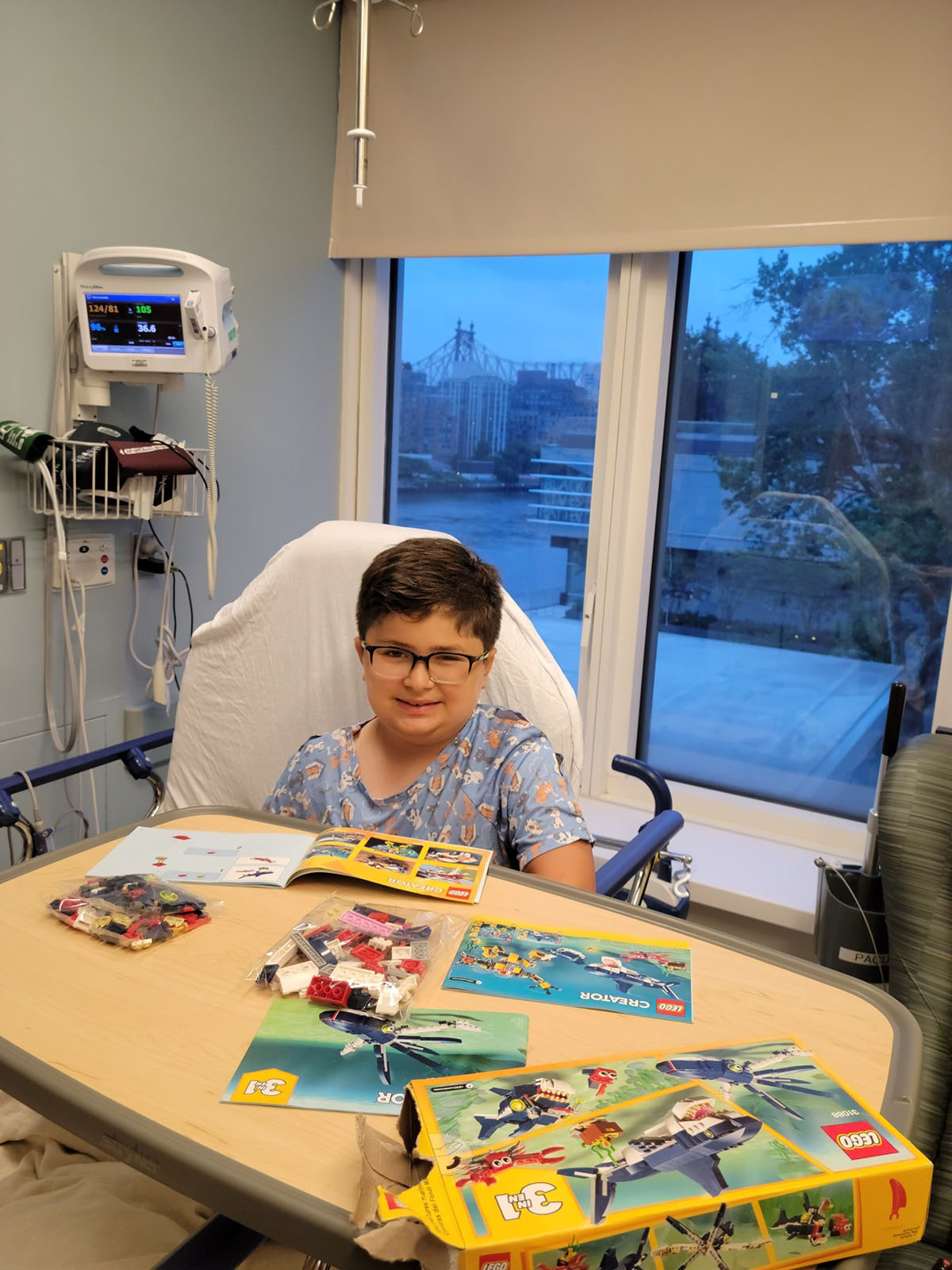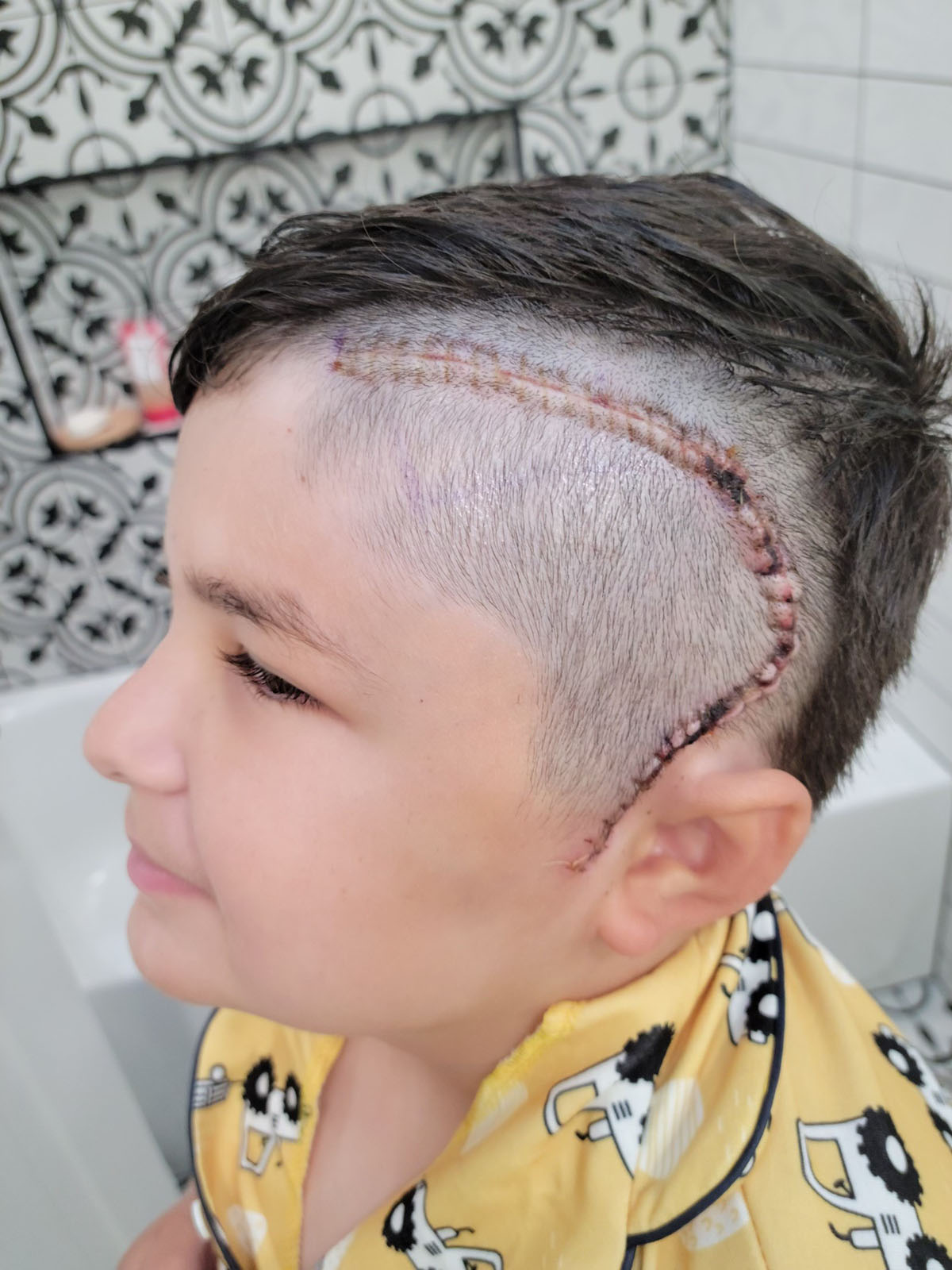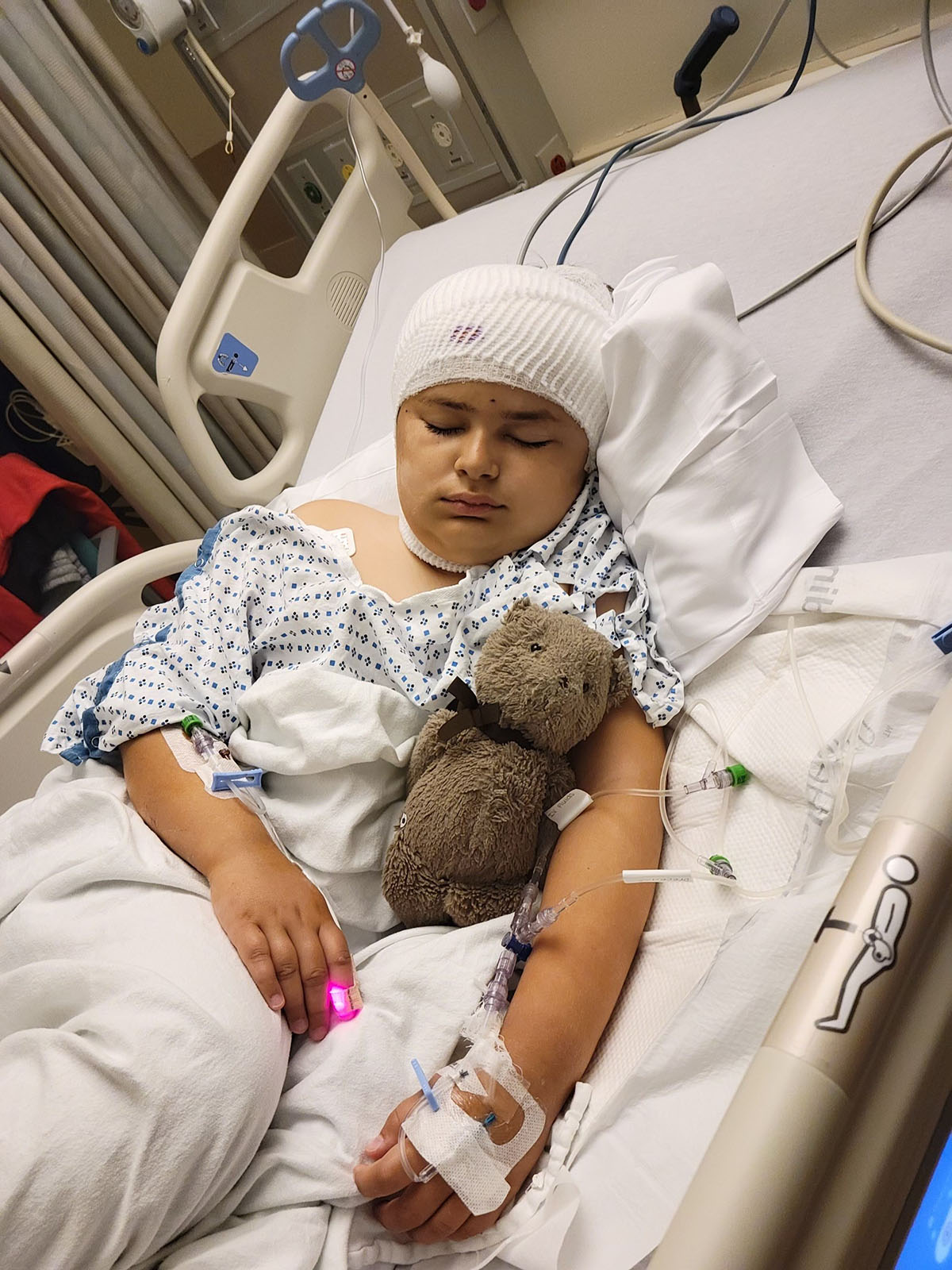Neil's Story
Eight-year-old Neil Rosenthal from Long Beach, New York, is an energetic boy with a passion for Legos, Roblox, and an insatiable curiosity. He loves bike riding along the boardwalk, swimming in the ocean, and going on adventures with his parents, Allyson and Ben, and his sister Gwen . Neil was a happy and healthy boy until one day last spring, at the Bronx Zoo, Neil experienced a seizure.
“We were at the alligator exhibit, and Neil suddenly went completely still and stared at the alligators, as if he was in a trance,” Allyson remembers. “We thought maybe he was just entranced with the alligators, but it was very strange, and it took him a few minutes to get out of it.”
Over the next few weeks, Neil’s “blank-outs,” as Allyson and Ben called them, occurred several more times. “Seemingly out of nowhere, Neil would just go blank, and he’d just stand still, non-responsive, and then he’d come out of it 40 to 60 seconds later,” says Ben. “Neil never remembered these episodes.”
Growing increasingly concerned, the parents took Neil to a neurologist near their home on Long Island. “We showed the neurologist videos of Neil’s episodes, and the neurologist said because Neil has autism spectrum disorder, she thought the episodes were behavioral and Neil was making them up. She also did an EKG which was normal.”
As the summer wore on, Neil’s episodes were happening more frequently and his parents noticed changes in his personality. “Neil, who was normally the sweetest, kindest boy you could imagine, was becoming aggressive and short-tempered with us and with his friends,” says Ben. “We knew he wasn’t himself.”
At the suggestion of Allyson’s work colleague, Allyson and Ben took Neil to see Dr. Rami Rafael Grossmann, a pediatric neurologist on Long Island. “We showed Dr. Grossmann the videos, and he told us, ‘You’re not crazy, there is something going on here,’” says Allyson. “This neurologist was convinced that these episodes were seizures.”
A seizure is caused by sudden, temporary, bursts of electrical activity in the brain that change or disrupt the way messages communicate between brain cells. These electrical bursts can cause involuntary changes in awareness, behavior, body movement, or sensation. Sometimes a seizure is a symptom of another medical problem, such as a high fever (especially in children), a stroke, infection, low blood sugar, very low blood pressure, or a brain tumor.
Dr. Grossmann did an EEG in the office, which was again normal. He was so convinced however that Neil was experiencing seizures, and he ordered an MRI.”
After the MRI, Dr. Grossmann immediately called Allyson and Ben and told them Neil has a brain tumor. He referred them to Mark M. Souweidane, MD, Director of Pediatric Neurosurgery at NewYork-Presbyterian & Weill Cornell Medicine. Dr. Souweidane is one of the country’s top pediatric neurosurgeons specializing in brain tumors, and he conveniently has an office location on Long Island. The practice extends its high quality care throughout the region with offices in Westchester, Queens, Brooklyn, and Eastern Long Island. This ensures that children everywhere have access to the best neurosurgical care in the country.
When the parents met with Dr. Souweidane, he explained that Neil had a 4.5 cm tumor in the left temporal lobe of his brain. Tumors in this location often cause seizures and can impart dramatic changes in learning capability and thought. Dr. Souweidane proposed a type of brain surgery called a left temporal craniotomy, which involves opening up Neil’s skull to remove the tumor. The surgery would be performed at NewYork-Presbyterian Komansky Children’s Hospital, one of the best children’s hospital in the country.
The parents felt an instant connection with Dr. Souweidane. “Dr. Souweidane is amazing,” says Allyson. “He answered all of our questions and was extremely calm and reassuring. I consider myself very uptight and nervous, but Dr. Souweidane told us everything was going to be alright, we’re going to do this, and Neil is going to be okay.”
Pediatric brain tumors require advanced, multidisciplinary care, with specialists experienced in providing a well-coordinated effort for every phase of a child’s care. After their meeting with Dr. Souweidane, Allyson and Ben met with a team of specialists who explained every facet of Neil’s care before, during, and after surgery. “The specialists created an entire plan of care for Neil,” says Allyson. “It was very reassuring to know that we had a team of experts who considered Neil’s every need.”
In late August, five days before Neil’s surgery, a Child Life specialist met with Neil over Zoom and gave him a virtual tour of NewYork-Presbyterian Komansky Children’s Hospital. “Neil was worried about the surgery, and he had a lot of questions,” says Allyson. “The Child Life specialist was wonderful at calming Neil’s anxiety and helping him know what to expect before going to the hospital.”
On the day of surgery, Neil was greeted by a Child Life specialist who decorated his mask and gave him Legos to play with. “She really helped to calm Neil down before surgery,” says Allyson. “Dr. Souweidane also came in to see Neil before the surgery, and as he was leaving, Neil wouldn’t give him a high 5, so Dr. Souweidane took off his shoes and gave him a foot 5, which was absolutely the perfect way to connect with Neil.”
At NewYork-Presbyterian, pediatric neurosurgeons use the latest mapping and monitoring techniques to plan the surgery to ensure the best outcomes while minimizing risk. For Neil’s surgery, Dr. Souweidane used MR-based navigation with millimeter degrees of accuracy for precise localization for the tumor. Intraoperative real time imaging ensured that the entire tumor was removed.
After spending three days in the hospital, Neil was ready to go home. “Dr. Souweidane came in that day with a giant bag of Legos,” Allyson says. “Noticing that Neil had been working on the Great Pyramid of Giza Lego set, Dr. Souweidane sat down and spoke to Neil about how he went to the Great Pyramid of Giza. Dr. Souweidane has this amazing way of bonding with Neil, and we were so very grateful for this, because it helped Neil get through such a frightening experience.”
A week later, Dr. Souweidane had good news: Neil’s tumor was benign, and he would not need any follow up therapy. “When we met with Dr. Souweidane and Colleen Sanders, the brain care clinical coordinator, Neil had a million questions about the tumor: what type of tumor was it? what color was it? and where is it now? Dr. Souweidane reached out to the pathologist, Dr. Liechty, who sent Neil a three-page report with photos of the tumor. He also said, if down the road Neil becomes interested in pathology as a career, to reach out to him and he’d be happy to talk with Neil about it. That is above and beyond what we ever thought a medical team would do for us.”
Today, Neil’s seizure frequency has plummeted and the disruptions were gone: classroom activities, friendships, and family life were back on track.
Allyson and Ben are thrilled with the care Neil received at NewYork-Presbyterian. “We were so touched by Dr. Souweidane’s caring attitude and the amount of time he spent talking with us and connecting with Neil,” says Allyson. “The team was top-notch. From the person answering the phone to the nurses, who were so kind and playful with Neil, to Colleen, who answered our every text within a day, everyone was so caring, compassionate, and helpful. They helped Neil return to his normal, joyous self, and I am forever grateful.”





